

War stopped in 1918 and the Austro-Hungarian Empire was no more. The year following, automobiles under the marque Tatra begun to appear in the newly created country of Czechoslovakia. The Moravian town of Nesselsdorf had become Koprivnice and Nesselsdorfer Wagenbau was now called Koprivnicka Vozovka a.s. (Koprivnice Wagon Works). The name Tatra replaced the Nesselsdorfer marque.
The Tatra name comes from the Tatra High Mountains, some of the higher peaks of the Carpathian mountain range. It has been recalled that one particular day on a road from the settlement of Lomnica to Strba (Szczyrbsk in Polish) in the Tatras (check the map in the The Tatra Mountains Virtual Tourist for the location) a very successful test, in 1919 or so, of a Nesselsdorfer car featuring experimental 4-wheel brakes occurred. This involved passing a sleigh on the snow-covered road and suprising its occupants as to how an automobile could cope in such conditions, prompting a statement to the effect of "This is a car for the Tatras!". And the rest is, as they say, history.
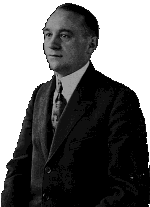 No doubt one of the greatest contributors to the manufacturer was the great and prolific
Austrian engineer Hans Ledwinka. He returned to Tatra in 1921 for good after having left it twice before. Management had changed, the automobile-hostile boss Erhard Kobel was replaced by Leopold Pasching. Ledwinka, prior to returning, had thought hard of the possible production of a small "people's car", which the management of Steyr had dismissed outright.
No doubt one of the greatest contributors to the manufacturer was the great and prolific
Austrian engineer Hans Ledwinka. He returned to Tatra in 1921 for good after having left it twice before. Management had changed, the automobile-hostile boss Erhard Kobel was replaced by Leopold Pasching. Ledwinka, prior to returning, had thought hard of the possible production of a small "people's car", which the management of Steyr had dismissed outright.
The return of Mr. Ledwinka to Tatra signalled the emergence of the company as a maker of very technically significant and advanced automobiles. He was swiftly installed in the position of chief engineer and would therefore be responsible for the design of numerous Tatra automobiles. In the late 1920s he would become technical director.
In about 1923 the construction of a new factory for automobile manufacture was completed and production of the new Tatra T11, displayed at the Prague Autosalon, was begun. This was the first car designed as a Tatra from the outset, the ones prior to it (such as the U/T10) started life as Nesselsdorfer automobiles and were later renamed.
 T11 (T.a.)
T11 (T.a.)The T11, designed by Hans Ledwinka, was the "people's car" he had previously dreamt of. It was a rugged and relatively small car for the times and was actually quite progressive in its design. Featuring an independent rear suspension using swing axles and a torsionally rigid back-bone chassis construction (the drive-shaft ran inside a central tube to which components were bolted), it offered a smooth and comfortable ride. Its rear wheels were powered by a front mounted 1.06-litre air-cooled 2-cylinder 12/14 bhp engine, the air cooled unit being chosen due to its simplicity, reliability, and tolerance of severe temperatures. The T11's light weight (under 700 kg for the cabriolet version) and simplicity guaranteed economical operation and respectable performance with a 90 km/h top speed. On top of that it was also the T11 was aesthetically successful, with its distinctive clean and rounded nose (to be carried on to later models), and so was awarded 1st prize for elegance at the 1924 Stuttgart Autoshow.
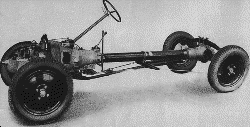 T11 central-tube chassis
T11 central-tube chassisThe T11 won numerous reliability runs and races, mostly in the hands of Josef Vermirovsky, against more powerful and heavier opponents. This included 1st place in the 1100cc-class at the well known Targa Florio race in Italy and 1st prize for lowest fuel consumption at a Tokyo trial.
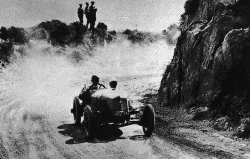 At the Targa Florio
At the Targa FlorioAbout 3500 T11s were produced until 1926 when it was replaced by the evolutionary T12, which was very similar except for an upgrade to 4-wheel brakes and other minor improvements. Over 7500 of the T12s were sold before being discontinued in 1933.
As a sideline to the history of the T12, between 1928 and 1933 the Hungarian Unitas company assembled about 500 of these.
In 1926 appeared a much larger Tatra, the T17 touring car, of a
wheelbase of 3540 mm. It was an elegant and conservatively-styled
luxurious automobile constructed on the lines of the T11/12 but with
a fully independent suspension at both ends - the front suspension now also
employed swing-axles - and a water-cooled engine which prompted the
use of a traditional radiator grille which went well with the
Rudge-Whitworth wire wheels. The engine was a 1.9-litre OHC six with
an output of 35 bhp at 3000 rpm.
As usual for a Tatra the T17 had good handling characteristics, a smooth ride, and offered good performance with a maximum speed of 120 km/h. This also allowed these automobiles some competition successes in, for example, hill climbs.
 a T17 example
a T17 exampleLater on, the T17 was joined by the T17/31, differring only in its engine which was increased to 2.3-litres in capacity and now produced 40 bhp. Production of both models ceased in either 1928 or 1930.
Also in the year 1926 the production and racing versions of the T30 ware
announced. Powered by an air-cooled 1.7-litre 4-cylinder motor with a 35bhp
output, the road-going T30 acheived a maximum speed of 130 km/h.
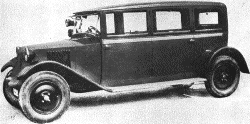
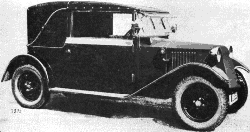 2 styles of T30
2 styles of T30Nine-hundred (900) of the production T30 were made until 1933. The racing version, made only in 1926, also experienced quite a few successful trials and hill climbs such as the Zirlerberg alpine trial near Innsbruck, Austria where 1st prize was gained.